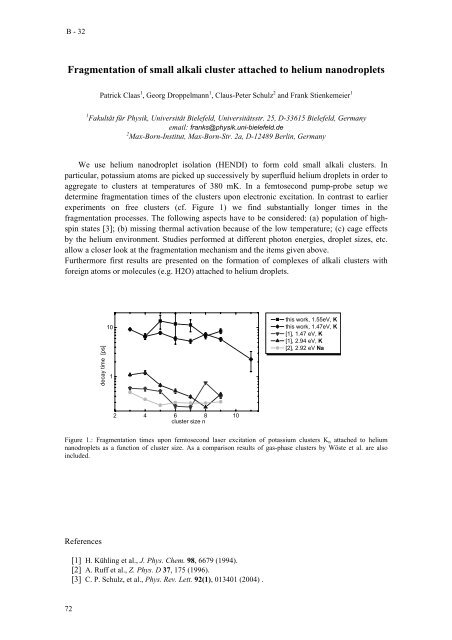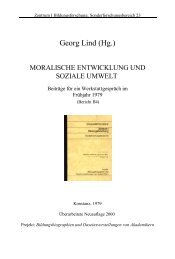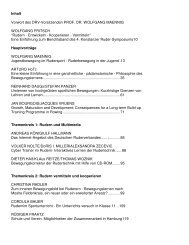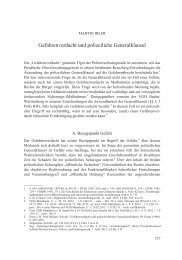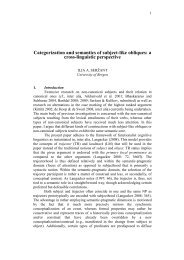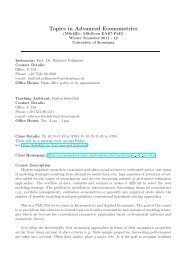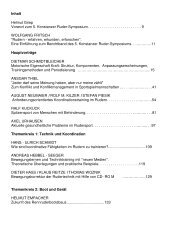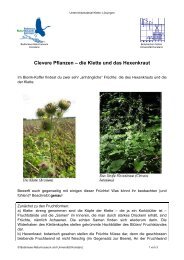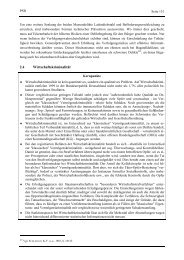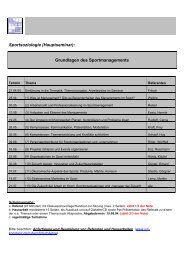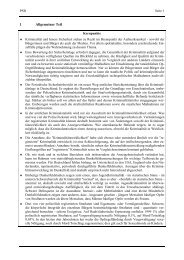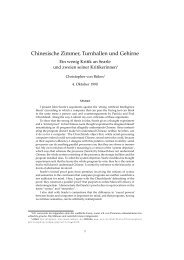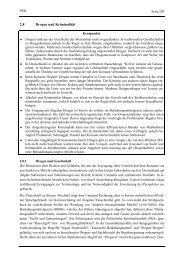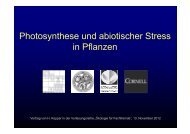Book of Abstracts Book of Abstracts - Universität Konstanz
Book of Abstracts Book of Abstracts - Universität Konstanz
Book of Abstracts Book of Abstracts - Universität Konstanz
Create successful ePaper yourself
Turn your PDF publications into a flip-book with our unique Google optimized e-Paper software.
B - 32<br />
Fragmentation <strong>of</strong> small alkali cluster attached to helium nanodroplets<br />
72<br />
Patrick Claas 1 , Georg Droppelmann 1 , Claus-Peter Schulz 2 and Frank Stienkemeier 1<br />
1 Fakultät für Physik, <strong>Universität</strong> Bielefeld, <strong>Universität</strong>sstr. 25, D-33615 Bielefeld, Germany<br />
email: franks@physik.uni-bielefeld.de<br />
2 Max-Born-Institut, Max-Born-Str. 2a, D-12489 Berlin, Germany<br />
We use helium nanodroplet isolation (HENDI) to form cold small alkali clusters. In<br />
particular, potassium atoms are picked up successively by superfluid helium droplets in order to<br />
aggregate to clusters at temperatures <strong>of</strong> 380 mK. In a femtosecond pump-probe setup we<br />
determine fragmentation times <strong>of</strong> the clusters upon electronic excitation. In contrast to earlier<br />
experiments on free clusters (cf. Figure 1) we find substantially longer times in the<br />
fragmentation processes. The following aspects have to be considered: (a) population <strong>of</strong> highspin<br />
states [3]; (b) missing thermal activation because <strong>of</strong> the low temperature; (c) cage effects<br />
by the helium environment. Studies performed at different photon energies, droplet sizes, etc.<br />
allow a closer look at the fragmentation mechanism and the items given above.<br />
Furthermore first results are presented on the formation <strong>of</strong> complexes <strong>of</strong> alkali clusters with<br />
foreign atoms or molecules (e.g. H2O) attached to helium droplets.<br />
decay time [ps]<br />
Figure 1.: Fragmentation times upon femtosecond laser excitation <strong>of</strong> potassium clusters K n attached to helium<br />
nanodroplets as a function <strong>of</strong> cluster size. As a comparison results <strong>of</strong> gas-phase clusters by Wöste et al. are also<br />
included.<br />
References<br />
10<br />
1<br />
2 4 6 8 10<br />
cluster size n<br />
[1] H. Kühling et al., J. Phys. Chem. 98, 6679 (1994).<br />
[2] A. Ruff et al., Z. Phys. D 37, 175 (1996).<br />
[3] C. P. Schulz, et al., Phys. Rev. Lett. 92(1), 013401 (2004) .<br />
this work, 1.55eV, K<br />
this work, 1.47eV, K<br />
[1], 1.47 eV, K<br />
[1], 2.94 eV, K<br />
[2], 2.92 eV Na


